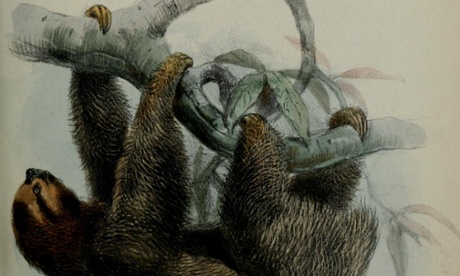Lizards, Turtles, Toads and Salamanders Face Extinction
Press Release 1/16/14, Albuquerque, N.M.— The Center for Biological Diversity filed a formal notice of intent to sue the U.S. Fish and Wildlife Service today seeking Endangered Species Act protection for seven Southwest amphibians and reptiles. The Center petitioned for these species — the Rio Grande cooter, Arizona toad, Arizona night lizard, Bezy’s night lizard, reticulate collared lizard, Yuman Desert fringe-toed lizard and Cascade Caverns salamander — in July 2012 because habitat loss and other factors are threatening their survival.
“The Southwest is home to some of the nation’s most fascinating scaly and slimy creatures,” said Collette Adkins Giese, a Center biologist and lawyer focused on protecting amphibians and reptiles. “Although few people have heard of, let alone seen, a Bezy’s night lizard or Rio Grande cooter, these unique species are an important part of the web of life and of what makes the Southwest unique. Without Endangered Species Act protection, we’re likely to lose these rare lizards, turtles, toads and salamanders forever.”
Although amphibians and reptiles have been around for hundreds of millions of years and survived every major extinction period, now, due largely to human impacts, they’re dying off at up to 10,000 times the historic extinction rate. This loss is alarming because they play important roles as predators and prey in their ecosystems and are valuable indicators of environmental health.
“There’s broad scientific consensus that amphibians and reptiles face a profound, human-driven extinction crisis that requires prompt action,” said Adkins Giese. “The Endangered Species Act has a nearly perfect record of stopping animals from going extinct — it’s hands-down our best tool for saving rare amphibians and reptiles.”
The Center was joined in its petition for these seven species and other amphibians and reptiles by several renowned scientists and herpetologists, including E.O. Wilson, Thomas Lovejoy and Michael Lannoo. Also, more than 200 scientists sent a letter last year asking that the Service review the status of the petitioned animals.
The Fish and Wildlife Service is required to make an initial finding within 90 days of receiving a petition about whether protections may be warranted — but more than a year later the agency still has not acted. The 90-day finding is the first in a series of required decisions and simply requires the Fish and Wildlife Service to determine whether the petition presents sufficient information to warrant further consideration, a process that requires few agency resources.
Species Highlights:
Yuman Desert fringe-toed lizard (Arizona): These striking little camouflaged lizards, known only to desert sites in southwestern Arizona, have long made their homes in sparsely vegetated areas of windblown sand. The fringe of scales on the sides of their toes helps them run across loose sand without sinking; tightly overlapping eyelids, earflaps and valve-like nostrils protect them from the constantly blowing sand. Their fragile habitat is under ongoing threat from development and off-road vehicles.
Cascade Caverns salamander (Texas): Perfectly adapted to their wholly aquatic life, these pale, ghost-like salamanders with external gills and recessed eyes spend their entire lives in the darkened worlds of Texas cave springs. Because they breathe through external gills and their skin, these highly unique amphibians require clean, clear-flowing water with a high content of dissolved oxygen. Their health is an important barometer of water quality. More and more pollutants, from pesticides and herbicides to fertilizers and household solvents, are showing up in surface and stormwater runoff that eventually finds its way into the underground springs where these salamanders previously thrived.
Arizona toad (Arizona, New Mexico, Nevada, Utah): These toads occur mainly in Arizona but also in southeastern Nevada, southwestern Utah and western New Mexico, where they depend on shallow, flowing, permanent water. Dams and reservoirs have dramatically altered waterways, replacing the flowing water preferred by Arizona toads with still water favored by Woodhouse’s toads, which displace and hybridize with Arizona toads. Hybridization and habitat loss are the biggest threats to the toads, which are now absent from more than 75 percent of their historic localities. Enlarged glands on the sides of their necks produce steroids that make Arizona toads unpalatable to some predators, inflaming the mouth and throat and causing nausea, irregular heartbeat, and, in extreme cases, death.
Rio Grande cooter (New Mexico, Texas): These beautifully marked turtles live in large, deep stream pools with relatively clear water and sandy or rocky bottoms in the Pecos-lower Rio Grande basin from New Mexico through Texas, as well as in Mexico. Scientists were unable to locate any young turtles in Texas, which is a troubling sign of a dying population struggling due to habitat degradation and overcollection. Intermittent stream flows from water diversions and flood control practices have made vast stretches of the Rio Grande uninhabitable, while river pollution by natural gas and oilfield runoff likely accounts for the apparent absence of the species over a 100-mile stretch of the lower Pecos.
Reticulate collared lizard (Texas): The reticulate collared lizard is found nowhere in the world but Texas, where it depends on open spaces for running and foraging and is therefore threatened by dense mats of nonnative grasses planted for cattle grazing. The lizards mostly eat insects but also sometimes small reptiles, mice and plants. The reticulate collared lizard is listed as threatened in Texas, but this status does not protect it from loss of habitat, its greatest threat.
Arizona night lizard
and
Bezy’s night lizard (Arizona): Arizona night lizards are known only from Yavapai County, Ariz., and Bezy’s night lizards are known from nine localities in central Arizona. Because they have extremely limited ranges, these lizards are highly vulnerable to extinction from any threat. Neither lizard is protected under state law. Collection for the pet trade is one of the biggest threats, and habitat degradation by collectors using devices to pry on its rocky habitats is likely significant in some areas.
Contact: Collette Adkins Giese, (651) 955-3821

















